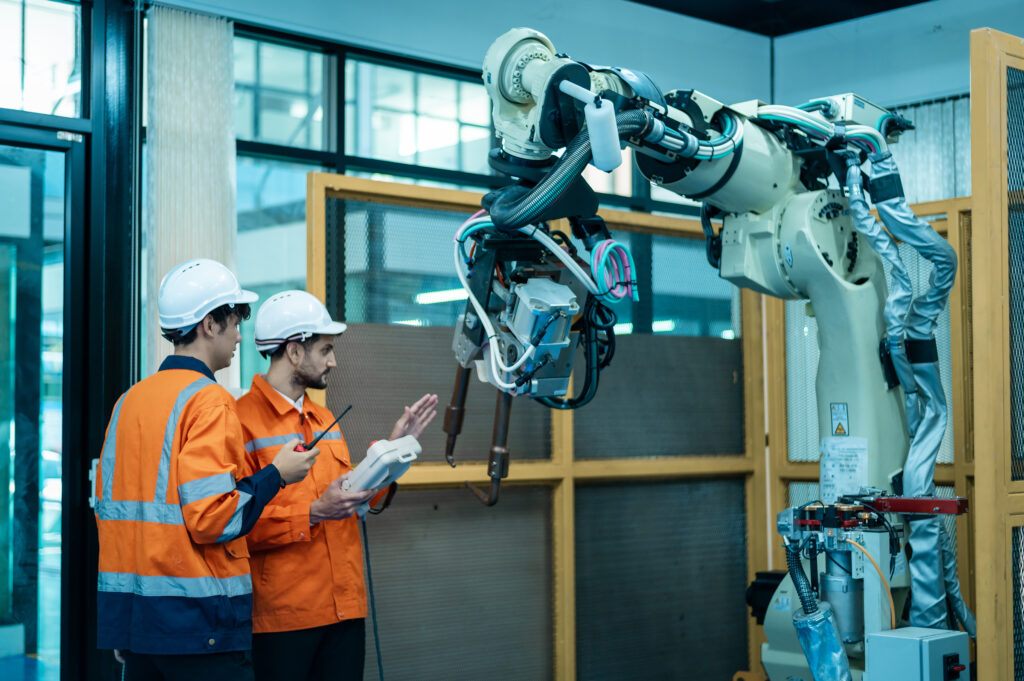The Industrial Internet of Things (Industrial I-IoT) represents a revolutionary shift in the way industries operate. By integrating advanced sensors, real-time analytics, and smart devices into industrial systems, Industrial I-IoT unlocks new levels of efficiency, productivity, and innovation. From manufacturing and energy to logistics and healthcare, this technology bridges the gap between the physical and digital worlds, enabling industries to make data-driven decisions with unprecedented precision.
Think of Industrial I-IoT as the nervous system of a smart factory, where every machine and process communicates seamlessly, adapting in real-time to optimize performance and reduce downtime. This interconnected ecosystem transforms traditional operations into smart, adaptive, and data-centric systems.
Why Industrial I-IoT Matters
The impact of Industrial I-IoT is profound, redefining how industries approach efficiency, safety, and innovation.
Boosting Operational Efficiency
Real-time monitoring and predictive maintenance reduce downtime and optimize resource utilization.
Enhancing Safety
Industrial I-IoT systems detect anomalies and risks, preventing accidents and ensuring worker safety.
Enabling Smart Decision-Making
Data-driven insights enable industries to make proactive decisions, improving quality and reducing waste.
Driving Sustainability
By optimizing energy use and minimizing waste, Industrial I-IoT supports environmentally friendly practices.
Core Components of Industrial I-IoT
The foundation of Industrial I-IoT lies in its key components, each playing a vital role in creating a connected ecosystem:
Smart Sensors and Devices
These devices collect and transmit data from industrial equipment, monitoring variables like temperature, pressure, vibration, and more.
Edge Computing Systems
Data processing occurs close to the source, enabling real-time analytics and immediate decision-making.
Industrial Gateways
Gateways manage data flow between devices, local systems, and the cloud, ensuring seamless connectivity.
Cloud Platforms
Centralized storage and processing in the cloud support advanced analytics and long-term data archiving.
Data Analytics Tools
AI and machine learning algorithms analyze vast datasets to generate actionable insights and predictive models.
Connectivity Infrastructure
High-speed, reliable networks such as 5G and industrial Ethernet are crucial for uninterrupted data flow.
How Industrial I-IoT Works
Data Collection
Sensors and devices embedded in machinery gather operational data in real-time.
Data Transmission
Using secure protocols, data is transmitted to edge devices or cloud platforms for processing.
Data Processing
Advanced algorithms analyze the data to identify patterns, anomalies, and opportunities for optimization.
Action Implementation
Insights from the data trigger automated responses or guide human decision-making to improve processes.
Feedback Loops
Continuous monitoring ensures ongoing refinement and adaptation of systems.
Benefits of Industrial I-IoT
Increased Productivity
Real-time insights streamline workflows and optimize machine performance.
Cost Savings
Predictive maintenance reduces repair costs and prevents costly breakdowns.
Improved Quality
Data analytics identify process inefficiencies, ensuring consistent quality control.
Enhanced Supply Chain Management
Tracking systems provide visibility into supply chain operations, reducing delays and inefficiencies.
Scalability and Flexibility
Industrial I-IoT systems can scale to accommodate growing operations and adapt to changing demands.
Challenges of Industrial I-IoT
Data Security Risks
Interconnected systems increase vulnerability to cyberattacks, necessitating robust security measures.
Integration Complexity
Connecting legacy systems with modern IoT devices can be challenging and costly.
High Initial Investment
Deploying Industrial I-IoT solutions often requires significant upfront costs.
Data Overload
Managing and processing vast amounts of data can overwhelm systems without proper infrastructure.
How to Implement Industrial I-IoT
Assess Needs
Identify specific areas where Industrial I-IoT can deliver value, such as reducing downtime or improving product quality.
Start Small
Pilot projects on a limited scale allow testing and refinement before full-scale deployment.
Select the Right Technology
Choose compatible sensors, edge devices, and analytics platforms tailored to your industry’s needs.
Integrate with Existing Systems
Ensure new technologies work seamlessly with legacy equipment and processes.
Train Your Workforce
Equip employees with the skills to operate and manage Industrial I-IoT systems.
Advanced Tips for Mastering Industrial I-IoT
Leverage Predictive Analytics
Use machine learning to predict failures and optimize maintenance schedules.
Adopt Digital Twins
Digital replicas of physical systems enable simulation and optimization in a virtual environment.
Invest in Cybersecurity
Protect your systems with encryption, firewalls, and regular security audits.
Focus on Interoperability
Standardize protocols and technologies to ensure smooth communication across devices and systems.
Stay Agile
Continuously monitor and adapt your Industrial I-IoT strategy to leverage emerging technologies.
Ready for Industrial Internet of Things
The Industrial Internet of Things is transforming industries by enabling smarter, data-driven operations. From predictive maintenance to real-time monitoring and process automation, Industrial I-IoT offers unparalleled opportunities to enhance efficiency, safety, and innovation.
For businesses looking to stay competitive in the digital age, adopting and mastering Industrial I-IoT is not just an option—it’s a necessity. By leveraging its full potential, industries can unlock new levels of productivity, sustainability, and growth.


